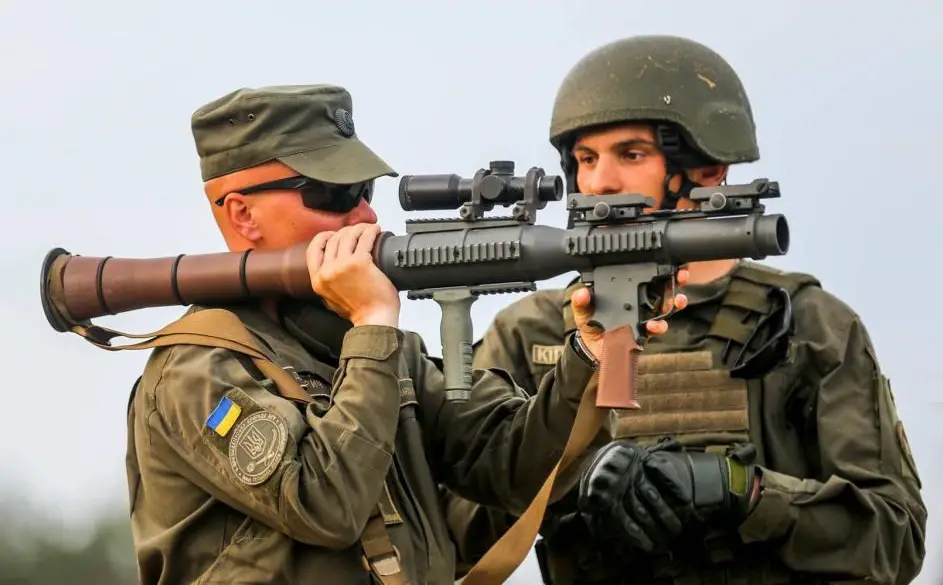Ukrainian soldiers in Bakhmut were spotted in early March with a modified American version of the RPG-7 — the PSRL-1 (Precision Shoulder-fired Rocket Launcher-1) rocket-propelled grenade launcher made by the Texas-based company AirTronic USA. The Calibre Obscura‘s Arms Research, which first spotted the rocket-propelled grenade launcher with the 3×24 Sightmark Wolfhound 3×24 Prismatic Weapon Sight in social media posts, concluded that its presence across Ukraine points to a more than symbolic contribution of weapon systems from the United States. The PSRL-1 is a modified American clone of the Soviet/Russian RPG-7 shoulder-fired rocket-propelled grenade launcher developed by AirTronic USA. The PSRL-1 is primarily manufactured for US-allied nations who are accustomed to Soviet-style weapons and international export.

In 2009, the AirTronic USA revealed their modernized version of the RPG-7, named the RPG-7USA, which was later developed into the PSRL-1. The weapon was a Program of Record in the United States Special Operations Command by 2015, and the PSRL-1 entered production by mid-2016. Compared to the RPG-7V2, the PSRL-1 is made of 4140/4150 ordnance-grade steel for a longer 1,000-round lifespan, is slightly lighter at 14 lb (6.35 kg) unloaded without optics, and can separate into two pieces for compact carry. The complete PSRL system includes different sighting systems, spare parts, slings, cases, ammo bags, and bipods for customization and transport. Like the RPG-7USA, the PSRL-1 is fitted with a MIL-STD-1913 quad-rail for mounting accessories, is compatible with mil-spec M4 carbine–style pistol grips and stocks, and is backwards compatible with all existing RPG-7 ammunition.

The manufacturer claims a 90% hit probability at 800 meters (2,600 ft) with the standard magnified sight, although it is reportedly accurate at ranges from 900–1,200 m (3,000–3,900 ft) and guided rocket ammunition can extend range to 2,000 meters (6,600 ft). Although Airtronic launchers are compatible with Soviet RPG-7 rocket ammunition, AirTronic also manufactures their own modernized RPG-7 rocket ammunition within the United States, and fully owns the intellectual property of their rocket ammunition. There are three variants of ammunition:
SR-H1, a 3.82 kg 93 mm high-explosive anti-tank (HEAT) warhead that is able to penetrate 500 mm rolled homogeneous armor (RHA) and has tracer ability.
SR-T1, a 3.82 kg 93 mm inert warhead is a training round and cannot penetrate armor
SR-T2, a 2.12 kg 70 mm inert warhead is also a training round and cannot penetrate armor

Anti-tank weapons are key in the Ukrainian conflict, where neither side is able to field effective air support due to the presence of short-range air defense systems. The first confirmed sales were made to the Armed Forces of Ukraine in 2017. AirTronic did not release specific details on the number of PSRL-1 units delivered to Ukraine, but the leaked contract from Ukrainian journalists filled the information gap. Ukrainian Interior Minister Arsen Avakov says the National Guard has received the first batch (500 units) of U.S.-made anti-tank grenade launchers PSRL-1 in 2018. Ukrainian troops used it for the first time in a conflict during the 2022 Russian invasion of Ukraine. While verified information about the sale of American-made grenade launchers in Ukraine is available, unanswered questions remain. Most importantly, it is unclear how many of these PSRL-1 systems have been sent to the front lines. At least one was captured by Russian forces.















